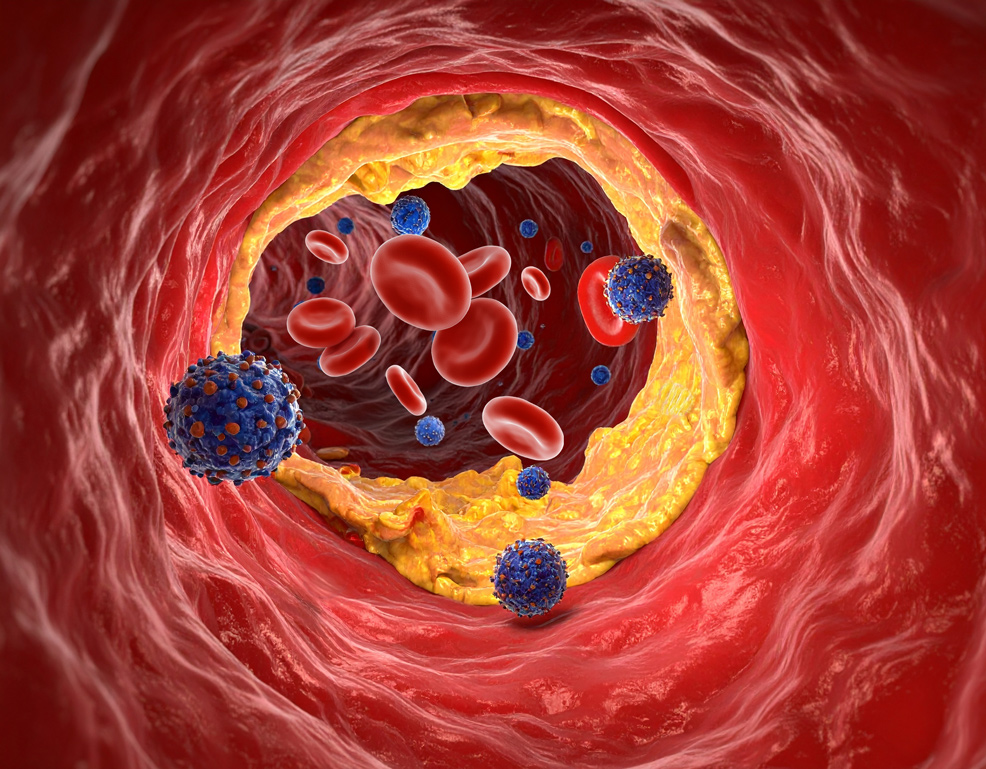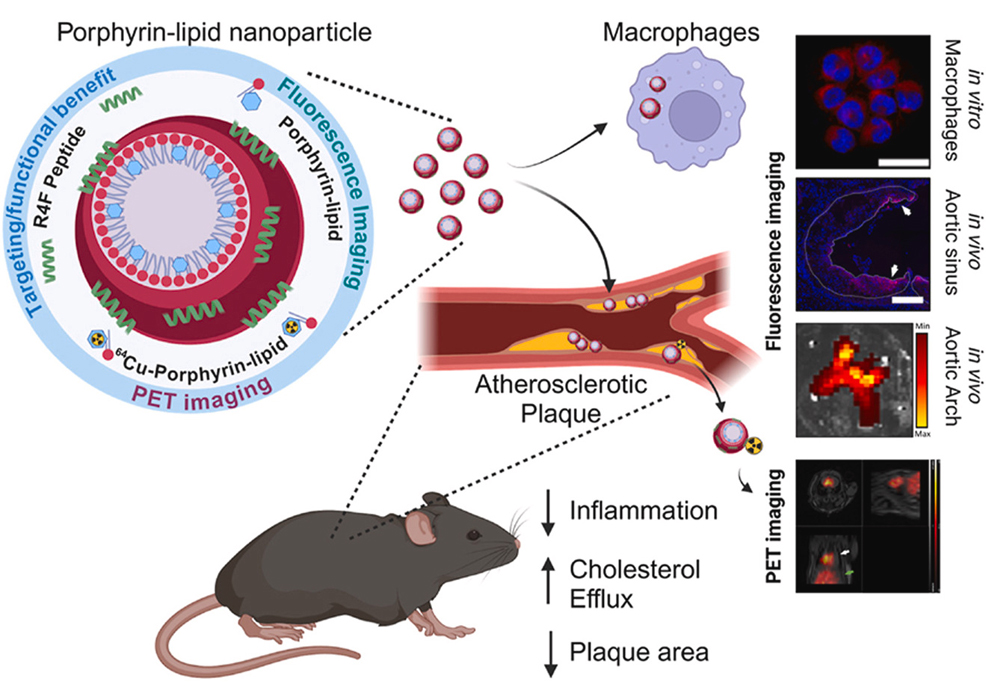
4th September 2025 Nanoparticles shrink arterial plaque in new study Researchers in Australia have engineered nanoparticles that detect and treat arterial plaque, reducing its size by up to 52% in preclinical trials.
Atherosclerosis – the build-up of plaque inside arteries – is a major driver of cardiovascular disease, the world's leading cause of death. Over time, this mixture of fats, cholesterol, calcium, and fibrous tissue narrows blood vessels and restricts blood flow, greatly increasing the risk of heart attack and stroke. Each year, cardiovascular disease claims an estimated 17.9 million lives, more than 30% of all deaths globally. Although current treatments can lower cholesterol levels and reduce risk, they often struggle to reverse plaque that has already formed. Now, scientists at the South Australian Health and Medical Research Institute (SAHMRI) have developed porphyrin-lipid nanoparticles (Por-NPs) that could transform how we approach the disease. These particles are coated with R4F, a short peptide, allowing them to home in on immune cells that drive inflammation inside artery walls. Once there, they function as both a diagnostic tool and a therapy – a so-called "theranostic" strategy – lighting up plaques for imaging while also helping to shrink them. In laboratory studies, the nanoparticles increased the removal of cholesterol from immune cells and sharply reduced levels of inflammatory molecules linked with atherosclerosis. In mouse models, they cut early plaque size by around 23% and unstable, high-risk plaques by as much as 52%. They also lowered the numbers of circulating monocytes and aortic monocytes – the inflammatory cells that help drive the disease – by 32% and 81%, respectively. "These nanoparticles don't just detect arterial plaque in arteries, they can also suck it up and take it to the liver, lowering inflammation," said study lead Dr Victoria Nankivell from SAHMRI. "What sets these nanoparticles apart is their ability to interact directly with immune cells in the arteries, drawing out cholesterol and helping the body process it more effectively."
Credit: Victoria A. Nankivell, et al. Materials Today Bio (2025)
Because porphyrin-lipid naturally fluoresces and can be labelled with radioactive copper, the nanoparticles can be tracked in living tissue using both optical and PET imaging. This dual capability means doctors might one day use a single platform to identify dangerous plaques early, intervene to stabilise or shrink them, and monitor the results in real time. "One of the key challenges in treating atherosclerosis is that inflammation fuels plaque build-up, creating a vicious cycle," said Nankivell. "Our nanoparticles help break that cycle, which could lead to better long-term outcomes for patients." Similar research has been explored before. In 2020, scientists at Michigan State University and Stanford reported a "Trojan Horse" nanoparticle that reactivated immune cells inside plaques, prompting them to clear debris and reduce inflammation. That approach focused on stimulating macrophages with a drug payload. The latest SAHMRI study goes further by combining therapy with built-in imaging – a "theranostic" design – and by demonstrating plaque reductions of more than 50% in preclinical models. This research is still at a preclinical stage, but if replicated in human trials it could transform cardiovascular care. A single platform that both detects and treats plaque might enable cardiologists to identify dangerous lesions earlier, intervene less invasively, and monitor treatment effectiveness without relying on surgery. This dual action could mark an important step toward smarter, more targeted approaches to one of the world's leading causes of death. Dr Nankivell and her team have published their work in the October 2025 issue of Materials Today Bio.
Comments »
If you enjoyed this article, please consider sharing it:
|
||||||








